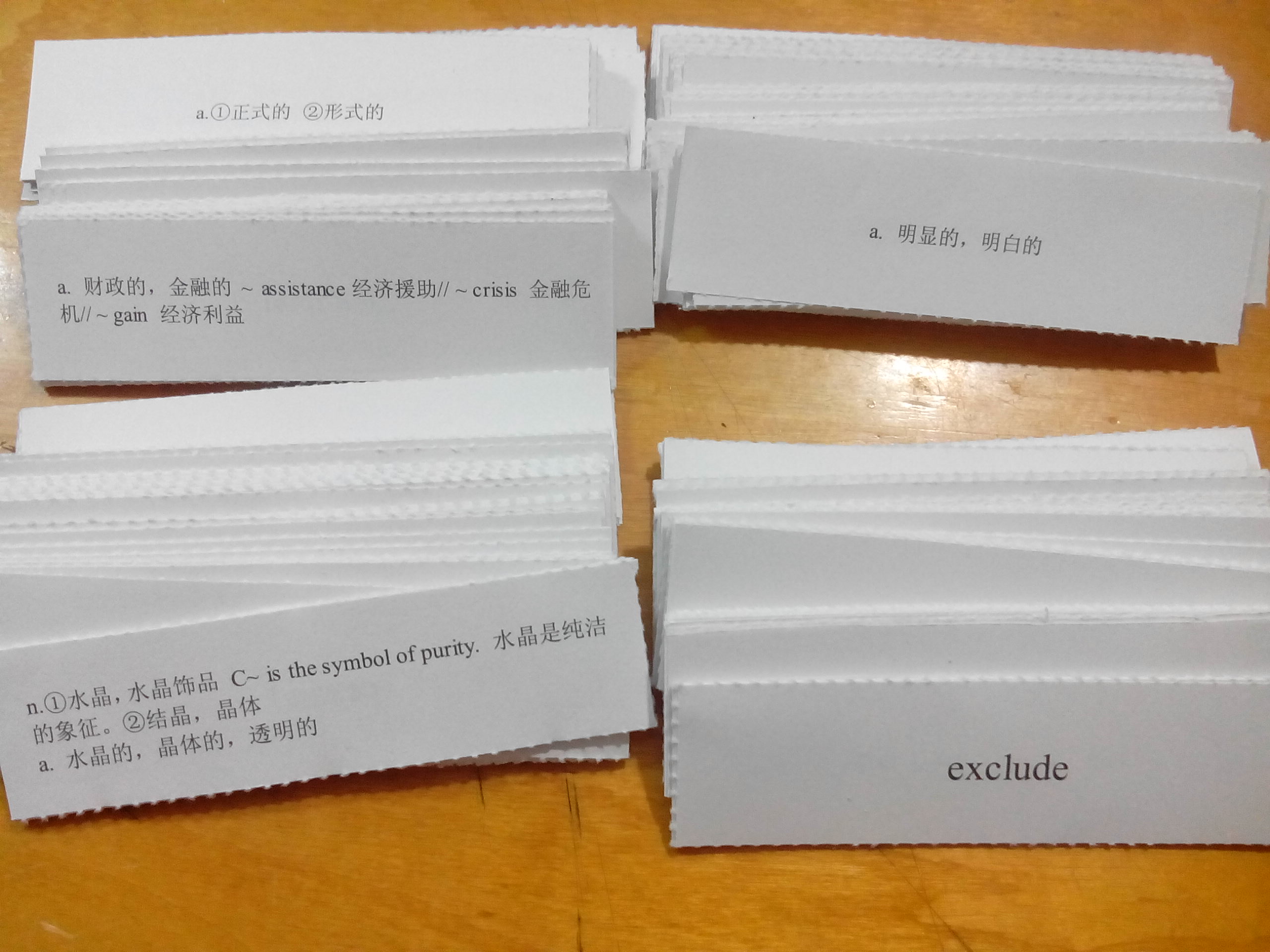 返回
教育头条
返回
教育头条

考研英语翻译攻略分享
下面小编跟大家一起了解考研英语翻译攻略分享,希望对大家的学习有所帮助。
一、一个名词多个修饰
1、名词作宾语
Chomsky’s grammar should show patterns of language change that are independent of the familytree or the pathway tracked through it.(2012年第5句)
翻译方法:其中“language change”和后面的“that”从句都用来修饰 “patterns”,把较简单的修饰置于句子主干中,然后复杂的修饰(从句)独立成句。 翻译:乔姆斯基的语法应该显示语言变化的模式,这些模式独立于家谱或者是通过家谱定位的路径。
2、名词作主语
Beethoven’s habit of increasing the volume with an intense crescendo and then abruptly following it with a sudden soft passage was only rarely used by composers before him.(2014年第3句)
翻译方法:其中的“Beethoven”和两个“and”连接的修饰部分一起修饰主语“habit”。先添加谓语动词使修饰部分变为宾语,再为句子真正的谓语和宾语添加主语。
翻译:贝多芬的习惯是先用强烈的高潮增加音量,然后立刻跟上一段突然变柔和的乐段,这个习惯在他之前很少被作曲家使用。
二、“of”的翻译
1、普通版
It may be said that the measure of the worth of any social institutionis its effect in enlarging and improving experience.(2009年第1句)
翻译方法:of 短语的规则是of后的修饰of前的,翻译的时候应该从后往前,即social institution——worth——measure.
翻译:可以说,任何社会制度的价值衡量标准,都是它在扩大和改进经验方面的作用。

2、进阶版
This seems a justification for neglect of those in need, and a rationalization of exploitation, of the superiority of those at the top and the inferiority of those at the bottom.(2011年第3句)
在知道了of短语的翻译方法,还要注意各个of 短语之间的逻辑关系。根据句子中的两个关系连词“and”,“a justification”“a rationalization” 并列,“the superiority”“the inferiority”并列。
翻译:这看起来是一个忽视那些需要帮助的人的正当理由,同时这使得剥削变得合理化,使顶层的人变得优越,底层的人变得低劣。
一、一个名词多个修饰
1、名词作宾语
Chomsky’s grammar should show patterns of language change that are independent of the familytree or the pathway tracked through it.(2012年第5句)
翻译方法:其中“language change”和后面的“that”从句都用来修饰 “patterns”,把较简单的修饰置于句子主干中,然后复杂的修饰(从句)独立成句。 翻译:乔姆斯基的语法应该显示语言变化的模式,这些模式独立于家谱或者是通过家谱定位的路径。
2、名词作主语
Beethoven’s habit of increasing the volume with an intense crescendo and then abruptly following it with a sudden soft passage was only rarely used by composers before him.(2014年第3句)
翻译方法:其中的“Beethoven”和两个“and”连接的修饰部分一起修饰主语“habit”。先添加谓语动词使修饰部分变为宾语,再为句子真正的谓语和宾语添加主语。
翻译:贝多芬的习惯是先用强烈的高潮增加音量,然后立刻跟上一段突然变柔和的乐段,这个习惯在他之前很少被作曲家使用。
二、“of”的翻译
1、普通版
It may be said that the measure of the worth of any social institutionis its effect in enlarging and improving experience.(2009年第1句)
翻译方法:of 短语的规则是of后的修饰of前的,翻译的时候应该从后往前,即social institution——worth——measure.
翻译:可以说,任何社会制度的价值衡量标准,都是它在扩大和改进经验方面的作用。

2、进阶版
This seems a justification for neglect of those in need, and a rationalization of exploitation, of the superiority of those at the top and the inferiority of those at the bottom.(2011年第3句)
在知道了of短语的翻译方法,还要注意各个of 短语之间的逻辑关系。根据句子中的两个关系连词“and”,“a justification”“a rationalization” 并列,“the superiority”“the inferiority”并列。
翻译:这看起来是一个忽视那些需要帮助的人的正当理由,同时这使得剥削变得合理化,使顶层的人变得优越,底层的人变得低劣。
考研英语翻译攻略分享,如果你喜欢这篇文章,请将其保留版权转载。我的微信号(18560125702)欢迎来咨询,10年教培行业工作经验,如果你在考研英语方面有疑问,请与我联系,我将为您提供全面专业的选课帮助。返回教育宝头条
【免责声明】本文仅代表作者本人观点,与教育宝无关。教育宝对文中陈述、观点判断保持中立,不对所包含内容的准确性、可靠性或完整性提供任何保证。请读者仅作参考,特此声明!
相关推荐
-
复试是考研中很关键的一步在口语和听力部分有什么诀窍可以保证高分
考研英语 2018年08月15日 16:55:44 -
考研英语 2018年08月22日 00:53:16
-
考研英语 2018年09月19日 09:57:04
-
雅思阅读Global Warming in New Zealand真题讲解
考研英语 2018年09月19日 09:57:08 -
考研英语 2018年09月19日 13:41:54





